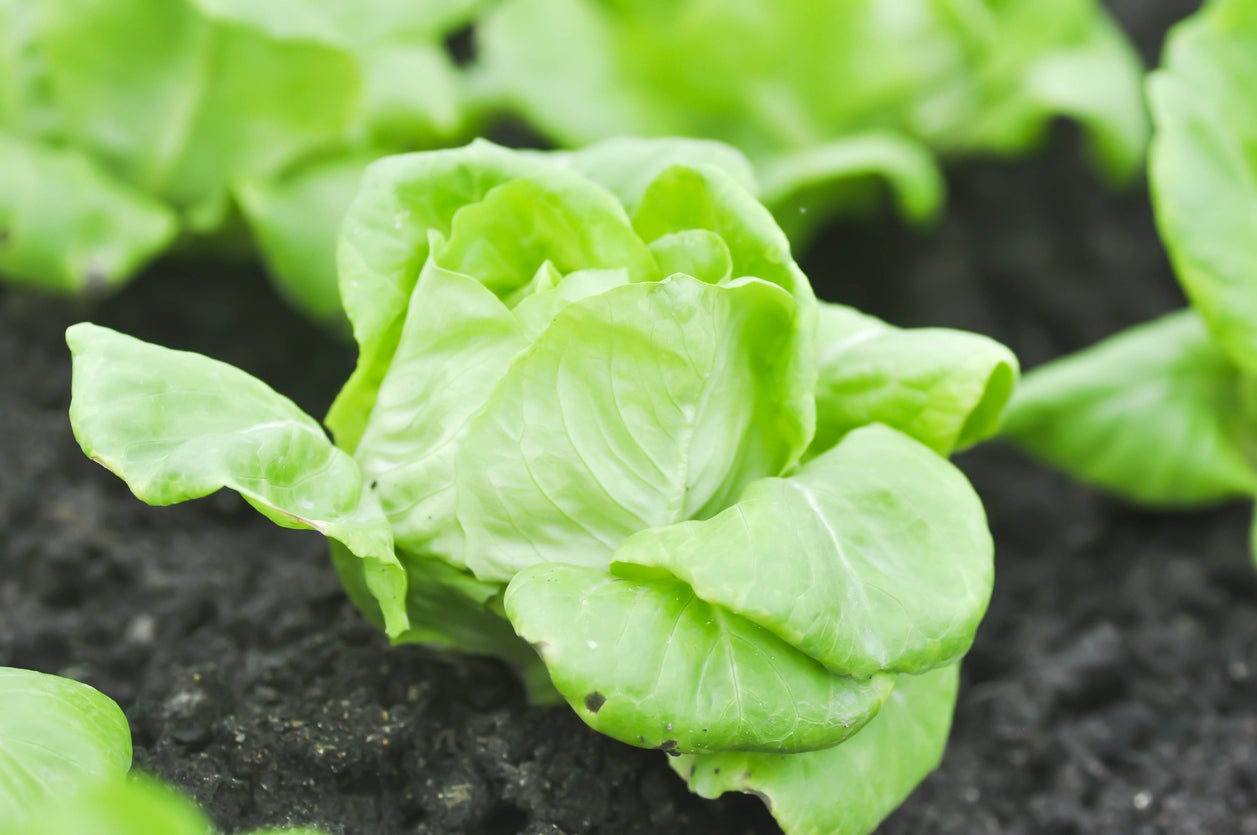Divina Lettuce Plant Facts – How To Care For Divina Lettuce Plants


Lettuce lovers rejoice! Divina lettuce plants produce emerald green leaves that are sweet and perfect for salad. In warmer regions, where lettuces bolt quickly, Divina lettuce is slow to bolt and can provide greens for weeks. Use the outer leaves as the inner head develops and then take the whole tightly folded head for a main meal. Some tips on how to grow Divina lettuce will see you enjoying this amazing lettuce within 50 days of seeding.
About Divina Lettuce Plants
There are many types of salad greens available for gardeners to grow. Divina is an outstanding variety of butterhead, with delicately ruffled leaves and a tender crunch. Care for Divina lettuce is minimal because once started in a good site and soil, it mostly fends for itself. There are a few serious pests to watch for when growing Divina lettuce and the variety is resistant to powdery mildew and sclerotinia. Divina is a classic butter leaf lettuce with the characteristic delicate, tooth happy texture and lush flavor. The heads are fairly loose with wavy leaves and bright green color. It is a French variety that has all but disappeared from cultivation and is an heirloom resurrected by novelty growers. The large outer leaves make perfect lettuce wraps and the denser inner head has a slight crunch at the rib with softer edges. Divina prefers cooler weather and should be planted in early spring or late summer for a fall crop.
How to Grow Divina Lettuce
Divina is grown from seed. Select a full sun location and prepare soil by tilling deeply and incorporating plenty of composted organic matter. You can also start seeds indoors in flats and transplant them outside. Indoor starts are best for a fall crop. This smaller lettuce is also suitable for container growing. Sow on the surface of prepared soil and dust a bit more soil over the top of the seeds. Keep the area moist but not soggy. Germination can be expected in 7 to 12 days.
Divina Lettuce Plant Care
Growing Divina lettuce is one of the easier crops provided it is timed to harvest before hot weather arrives. Even though it is resistant to powdery mildew, watering under the leaves will prevent any other fungal diseases. Keep vigilant for slugs and snails, which will make Swiss cheese out of your little plants. Provide slug bait, diatomaceous earth, or beer traps to prevent these common pests from chewing on your crop. Use organic insecticidal soap for any other pests. If you have rabbits in your garden, erect a critter fence. Harvest the outer leaves at any time. The heads should be ready to use in approximately 50 days.
Gardening tips, videos, info and more delivered right to your inbox!
Sign up for the Gardening Know How newsletter today and receive a free copy of our e-book "How to Grow Delicious Tomatoes".

Bonnie Grant is a professional landscaper with a Certification in Urban Gardening. She has been gardening and writing for 15 years. A former professional chef, she has a passion for edible landscaping.
-
 Grow ‘Karl Rosenfield’ Peony Plants For The Ultimate Frilly Border Beauties And Cut Flowers
Grow ‘Karl Rosenfield’ Peony Plants For The Ultimate Frilly Border Beauties And Cut FlowersFor frilly double magenta peony petals infused with a heady fragrance, grow ‘Karl Rosenfield’ peony plants. Here’s how to cultivate the ultimate plushy blooms
By Tonya Barnett
-
 10 Common Composting Problems That Can Spoil Your Garden Gold – Plus Easy Fixes
10 Common Composting Problems That Can Spoil Your Garden Gold – Plus Easy FixesLearn how to troubleshoot common composting issues before they ruin your stash – from bad smells and bugs to materials not breaking down as they should.
By Susan Albert